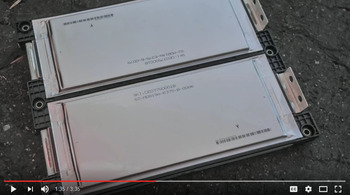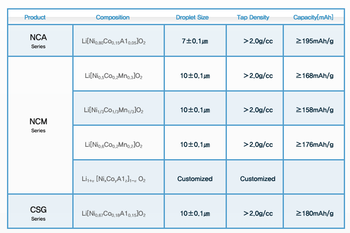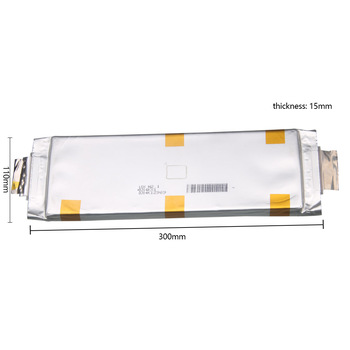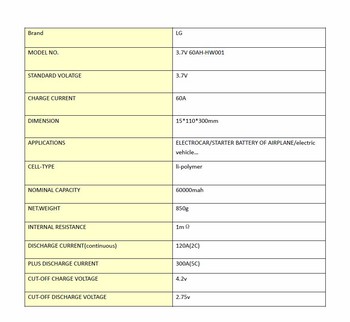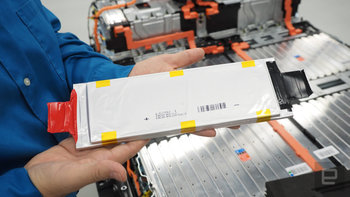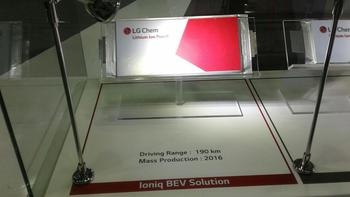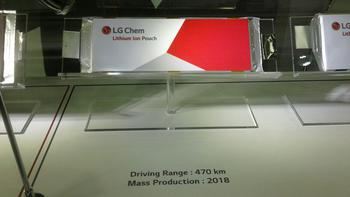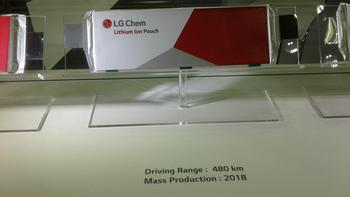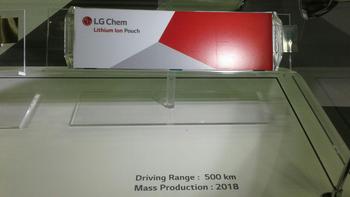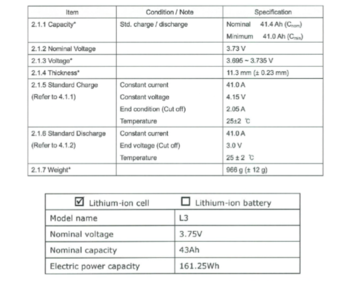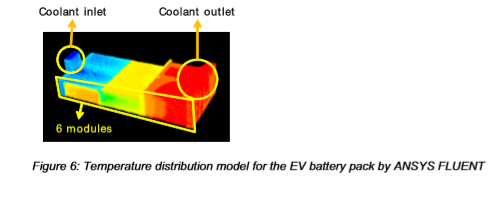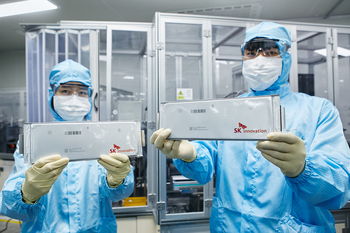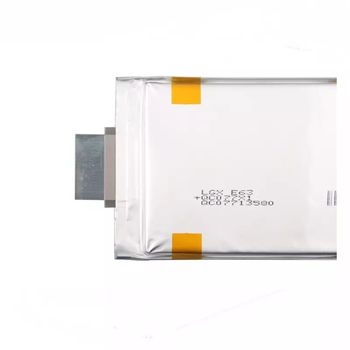-
This thread is to compare battery chemistries in different EVs. I am editing and updating this first post of the thread with complete details about the Soul EV battery. There is also a thread discussing the layout and position of the battery pack - Comparing the Soul EV battery with the Ioniq EV
The Soul EV has a battery by SK Innovation.
It has polymer pouch type cells, lithium nickel manganese cobalt oxide (NMC) cathode, a “special” ceramic separator with improved thermal resistance properties (presumably a wet separator by SK Innovation), high-capacity silicon/graphite (Si-C) anode and gel electrolyte additive materials. Each 40Ah battery cell has energy density of 200 Wh/kg
Press Release
=============
1./ Advanced battery for Kia Soul EV
2./ Kia pushes energy-density frontier with Soul EV battery
U.S. Advanced Battery Consortium Reports
=================================
3./ FY2014_APR_Energy_Storage_R&D (for SK Innovation E400 see printed pages 47-49, on screen pages 95-97)
4./ 2013USDRIVEAccomplishmentsReport (for SK Innovation E400 see printed page 32, on screen page 39)
5./ USABC_Final_Report_June_2014 (for SK Innovation E400 see printed pages E21-E23, on screen pages 145-147)
Lithium Ion Battery Components
6./ SK Innovation to Increase Production Capability of Lithium Battery Separator
-------------------------------------------------------------------------------------------
While looking for reasons why the Volt degrades less than the L eaf I found this info from Charles Whalen: (written in October 2010)
http://gm-volt.com/forum/showthread.php?5243-Volt-thermal-management-system-temperature-band/page2
This thread is to compare battery chemistries in different EVs. I am editing and updating this first post of the thread with complete details about the Soul EV battery. There is also a thread discussing the layout and position of the battery pack - Comparing the Soul EV battery with the Ioniq EV
The Soul EV has a battery by SK Innovation.
It has polymer pouch type cells, lithium nickel manganese cobalt oxide (NMC) cathode, a “special” ceramic separator with improved thermal resistance properties (presumably a wet separator by SK Innovation), high-capacity silicon/graphite (Si-C) anode and gel electrolyte additive materials. Each 40Ah battery cell has energy density of 200 Wh/kg
Press Release
=============
1./ Advanced battery for Kia Soul EV
2./ Kia pushes energy-density frontier with Soul EV battery
U.S. Advanced Battery Consortium Reports
=================================
3./ FY2014_APR_Energy_Storage_R&D (for SK Innovation E400 see printed pages 47-49, on screen pages 95-97)
4./ 2013USDRIVEAccomplishmentsReport (for SK Innovation E400 see printed page 32, on screen page 39)
5./ USABC_Final_Report_June_2014 (for SK Innovation E400 see printed pages E21-E23, on screen pages 145-147)
Lithium Ion Battery Components
6./ SK Innovation to Increase Production Capability of Lithium Battery Separator
-------------------------------------------------------------------------------------------
While looking for reasons why the Volt degrades less than the L eaf I found this info from Charles Whalen: (written in October 2010)
http://gm-volt.com/forum/showthread.php?5243-Volt-thermal-management-system-temperature-band/page2
Charles Whalen said:"... the Volt’s and L eaf’s respective battery packs have nearly identical chemistry, both using a lithium-manganese cathode. They both have the same sensitivity to high temps. Out of all the various lithium cathodic chemistries, lithium-manganese is the most heat sensitive and has the highest and fastest rate of capacity decay and degradation at higher temperatures."
The L eaf’s battery cell is manufactured by NEC, is a pouch type cell with stacked elements, a LiMn2O4 cathode from Nippon Denko, a graphite anode from Hitachi Chemicals, a Celgard PP dry separator, and an EC type LiPF6 electrolyte from Tomiyama.
The Volt’s battery cell is manufactured by LG Chem, is a pouch type cell with stacked elements, a LiMn2O4 cathode from Nikki Catalysis, a hard carbon anode (which is more robust and has better/longer calendar life properties than the graphite anode in the L eaf’s battery cell) from Kureha, a Celgard PP dry/SRS separator, and a PC type LiPF6 electrolyte produced in-house by LG Chem.














